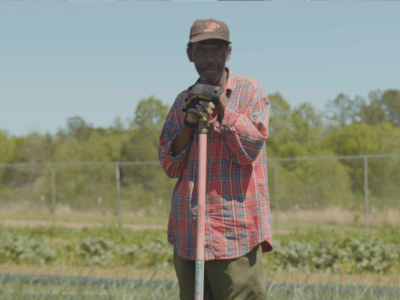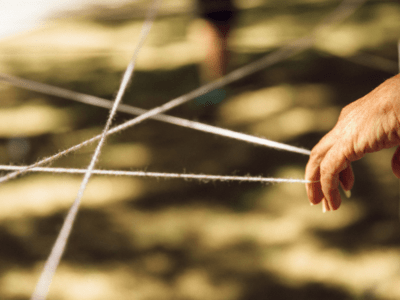This post is also available in: Español (Spanish) Kreyòl (Haitian Creole)
The coronavirus didn’t cause the racial, economic and health inequities in Indian Country, but it is exposing them. And in the process, centuries of infrastructure disinvestment and systemic racism are on full display.
Native communities are experiencing some of the worst coronavirus outbreaks in the United States. In Navajo communities alone, there have been more than 2,700 cases and 70 deaths as of May 4, 2020, according to Navajo Nation.
Native Americans have greater exposure to uranium contamination, residual radiation from open mines and significantly less access to healthy, fresh food and running water. As a result, they are more likely to suffer from underlying health conditions like asthma, hypertension and diabetes. In the best of times, these pervasive health inequities and pre-existing conditions result in a death rate among Native people that is twice the national rate. In a pandemic, the effects of these conditions are only compounded.
WKKF grantees and partners are no strangers to the levels of disparity and the policies that continue to plague Indian Country. As they address immediate issues and advocate to close the disparity gap in partnership with Tribal Nations, their perseverance highlights the resolve and resilience of Native people as they respond to this crisis.
Northwest New Mexico First Born partnered with Indigenous Lifeways and several local Indigenous-led organizations to develop the McKinley Mutual Aid initiative. In the last three weeks, they have raised more than $30,000 and have served more than 300 Indigenous families with food, water, personal protection equipment and baby supplies.
The Navajo Nation has now recorded more COVID-19 cases per capita than any of the 50 U.S. states, according to Complex Media. Water serves as a lifeline to combat the spread of the coronavirus, yet more than 30% of Navajo families don’t have access to running water in their homes, including the lack of sewer service, electricity, adequate health services and broadband access–all contributing to this devastating health crisis. DigDeep’s Navajo Water Project–active long before the crisis–provides life-saving water to families that don’t have it. Tribal governments, Tribal colleges and other key stakeholders work in partnership with DigDeep to help make sustainable change across communities.
In New Mexico—home to 23 sovereign nations (19 Pueblos, 3 Apache and Navajo Nation)—Pueblos face high infection rates. The Native American Budget and Policy Institute and the All Pueblo Council of Governors created a Tribal Response Plan COVID-19 in partnership with the State of New Mexico Indian Affairs Department.
To share learning resources with children at home throughout the country, the Indian Pueblo Culture Center made their innovative Indigenous Wisdom, Pueblo-based K-12 curriculum available for download at no charge. Students and families in many communities can access and explore.
First Nations announced $635,000 in grant support for Native communities across the country on the front line of COVID-19. First Nations’ COVID-19 Emergency Response Fund distributes funds to Native nonprofit organizations and Tribal programs. Initially, resources are prioritized for high-concentration areas–California, New Mexico, the Pacific Northwest, New York, Navajo Nation, Hopi Nation and other COVID-19 hotspots.
The National Indian Health Board (NIHB) has created a Tribal COVID-19 Response resource page to share timely information on: taking care of elders, talking to youth, oral health services and addressing food insecurity. NIHB also leads a national effort to secure resources for Native Nations to respond to COVID-19 and educates policymakers on the health care needs of Native people and communities.
The National Congress of American Indians provides legislative updates and COVID-19 coordination amongst Native Nations. They advocate for the rights of Native people during the COVID-19 response.
Native Voices Rising, a project of Native Americans in Philanthropy (NAP) and the Common Counsel Foundation (CCF) granted $500,000 to 51 Native-led groups empowering American Indian, Alaska Native and Native Hawaiian communities across the U.S. to advance Native-led, community-defined solutions both on and off the reservation. To help organizations respond to the COVID-19 crisis, NAP and CCF are foregoing any administrative costs for the first half of 2020, so 100% of funds move directly to community organizations. The full listing of grant partners can be found here, while Native Americans in Philanthropy tracks investments overall in Native communities.
As Native nonprofit leaders navigate federal resources available through the Coronavirus Aid, Relief, and Economic Security Act and subsequent additions to the relief bill, they must do so quickly, anticipating the latest round of funding to spend down quickly. Here is a list of participating Native American-owned banks to consult for applications and the Native American Bank’s Coronavirus COVID-19 Financial Readiness website.
POLICIES DRIVE SYSTEMIC INEQUITIES
Before the virus, policies in place negatively impacted economic growth in Indian Country and the effect felt by entire regional and state economies. Lacking a tax base, Tribes heavily depend on sales and excise tax and revenue from casinos (for those gaming Tribes), to fund vital government services – housing, education, health care, public safety and social services. Tribal governments already lack parity with states, local governments and the federal government in exercising tax authority. Now, the existing minimal tax infrastructure Tribes use to help meet basic needs is being hit hard by the shutdown.
Compounding Tribes’ inability to establish a strong tax base, current federal policy makes it difficult for Tribes to utilize tax-exempt financing options generally available to states to fund government infrastructure. For some, the $39.1 billion Tribal gaming industry is the main contributor of these services and is the 12th largest employer in the U.S. In addition, the industry provides $17 billion to state and local governments. The shutdown of this primary economic and vital services driver is creating dire situations in rural communities and will soon impact governments throughout the country.





Comments